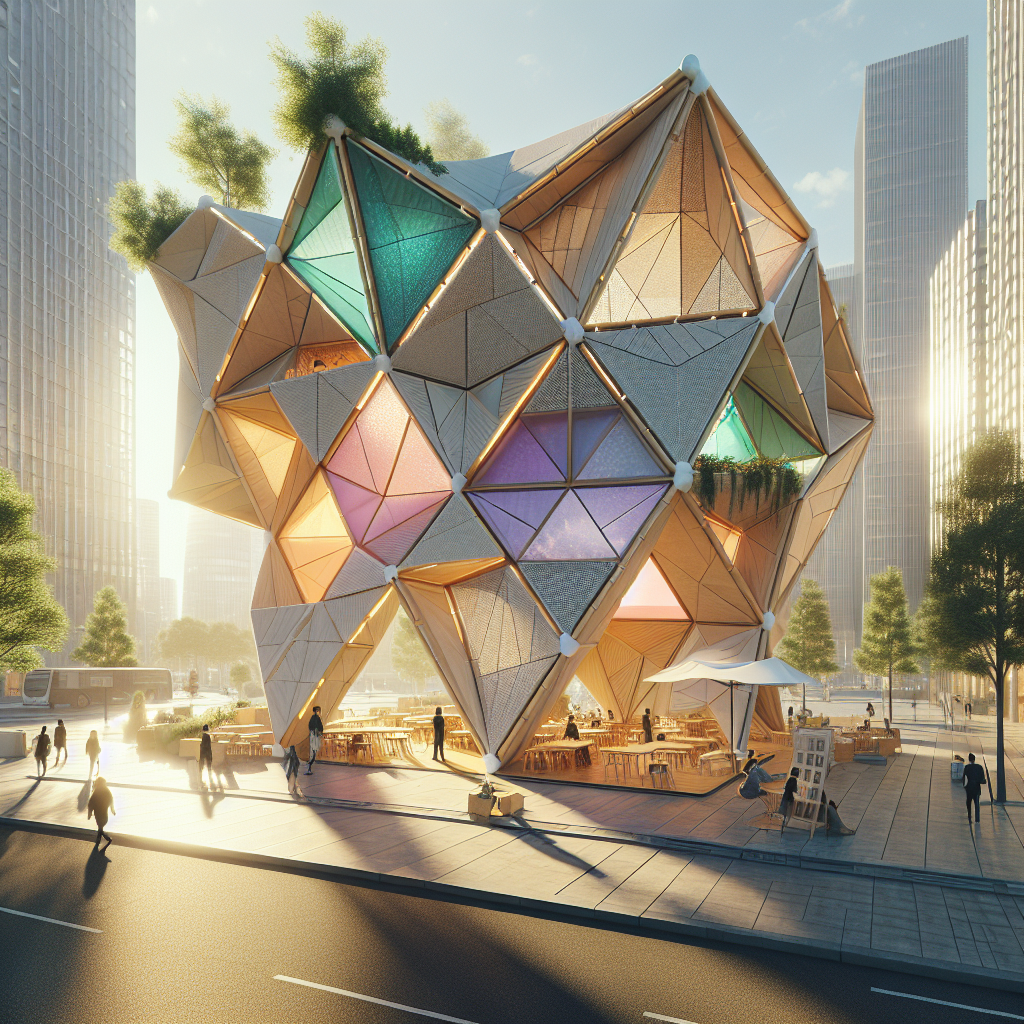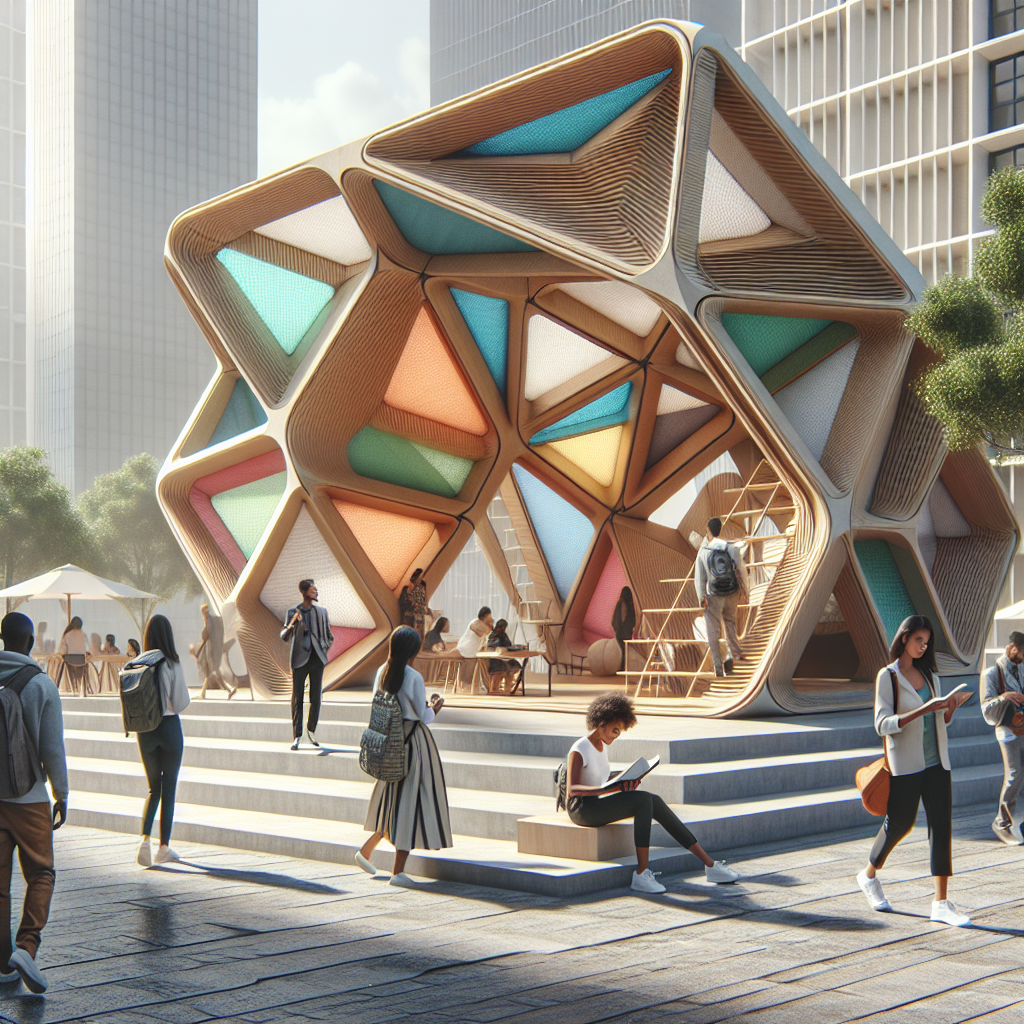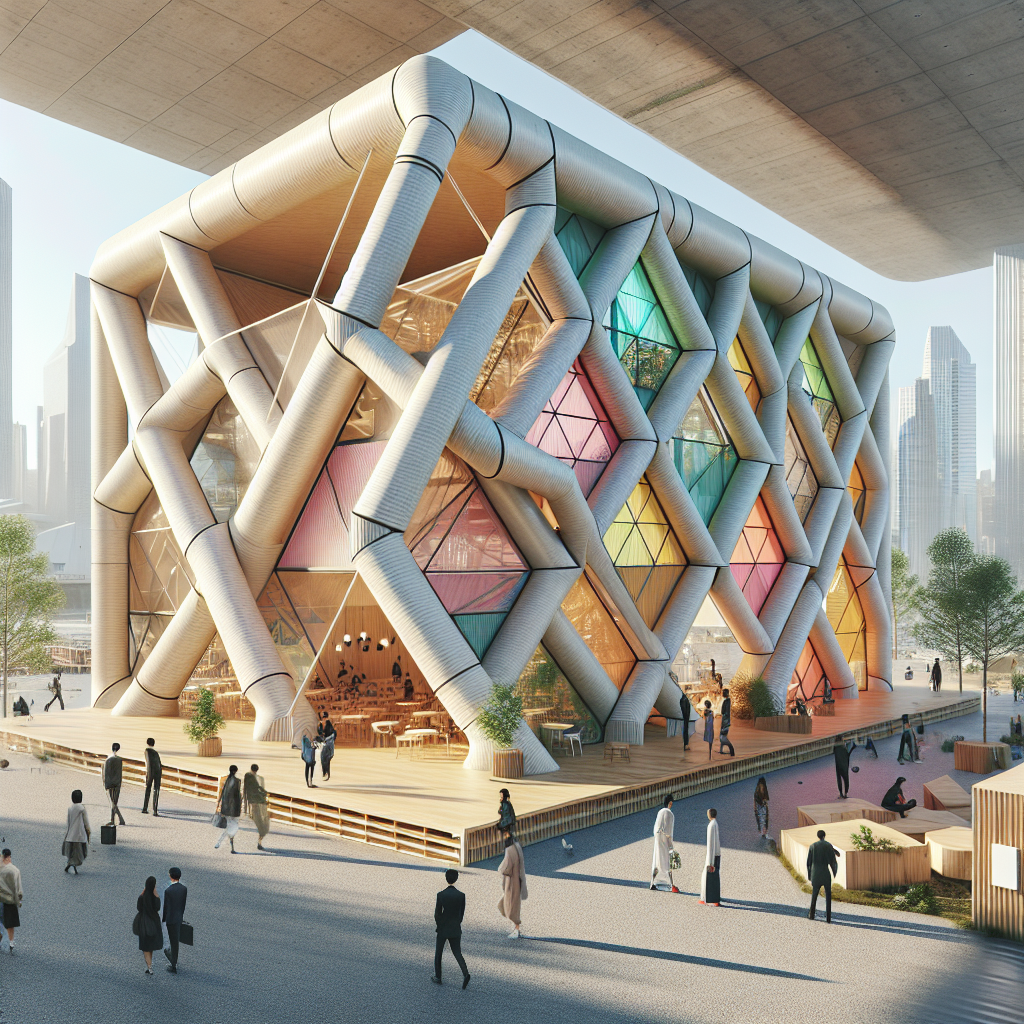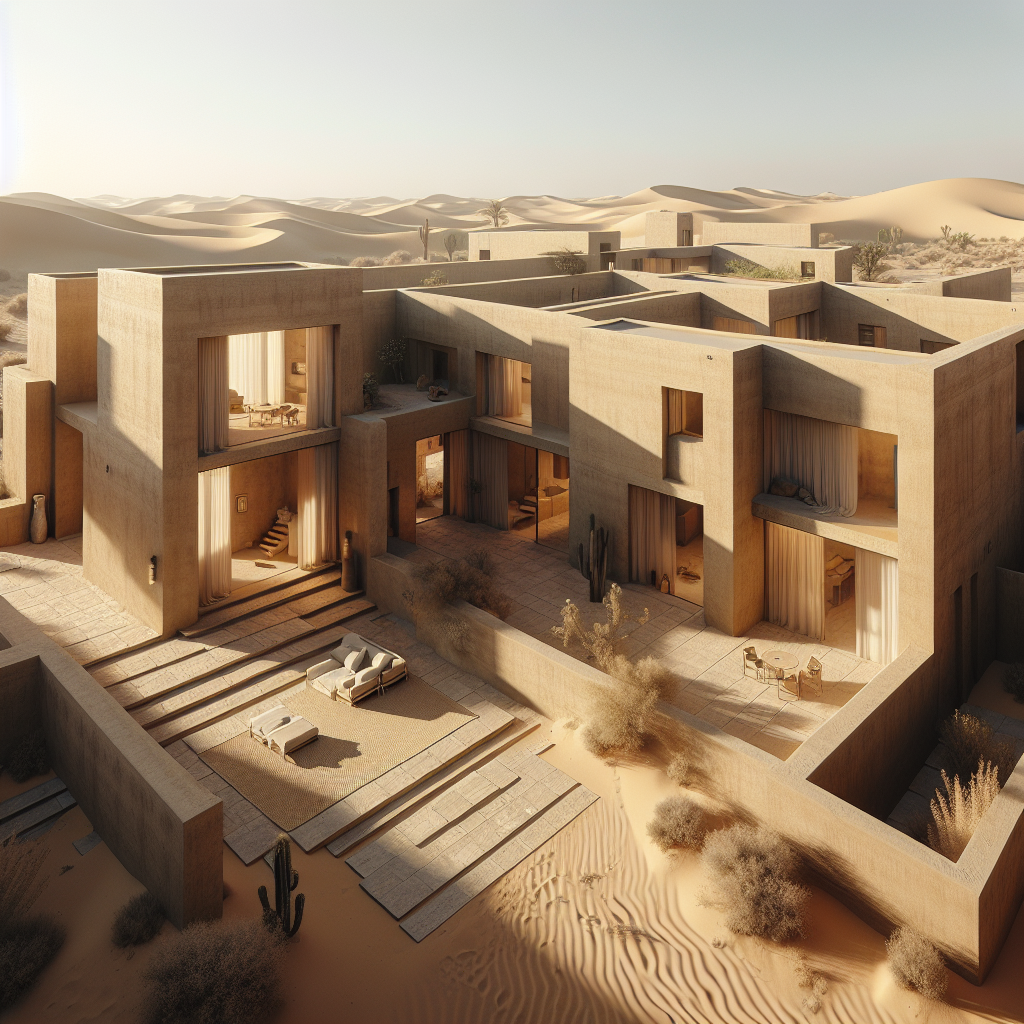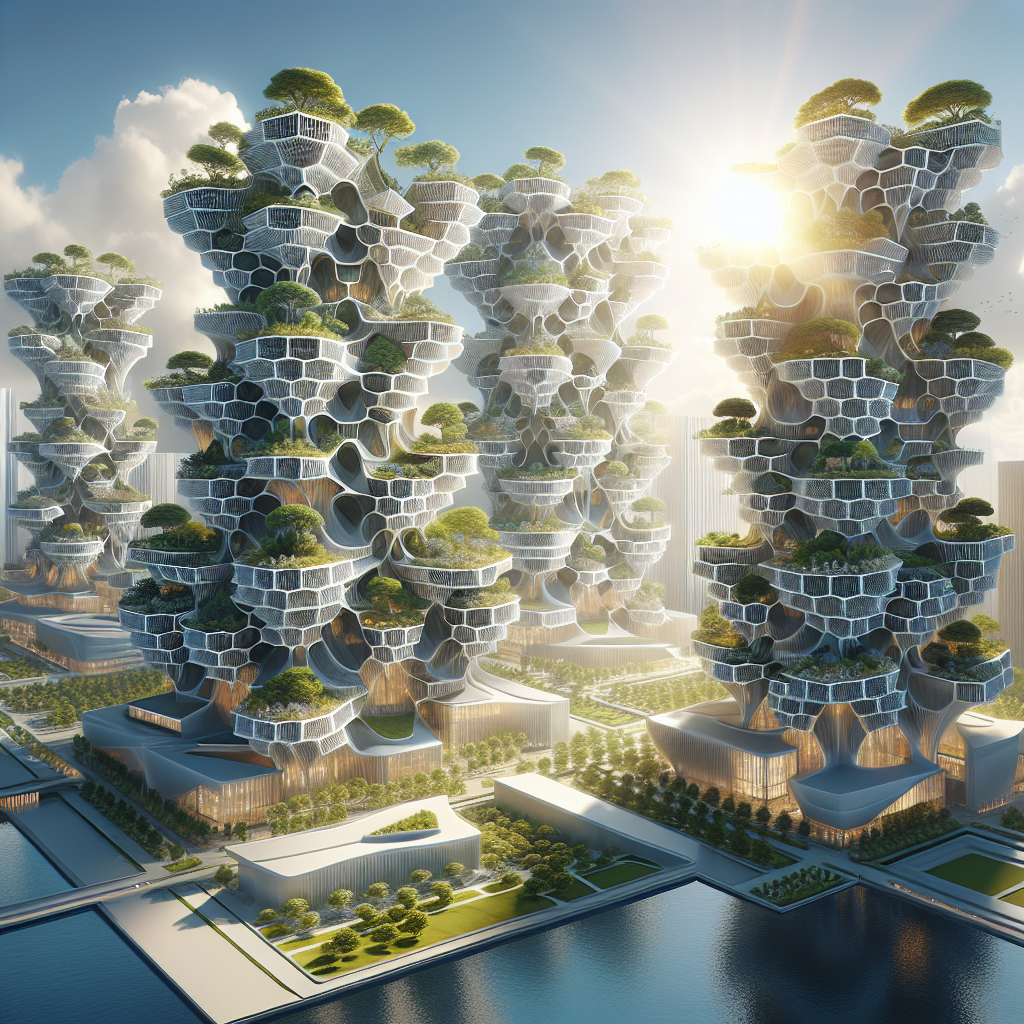Paper-based architecture folding: habitats for lightweight pop-up spaces
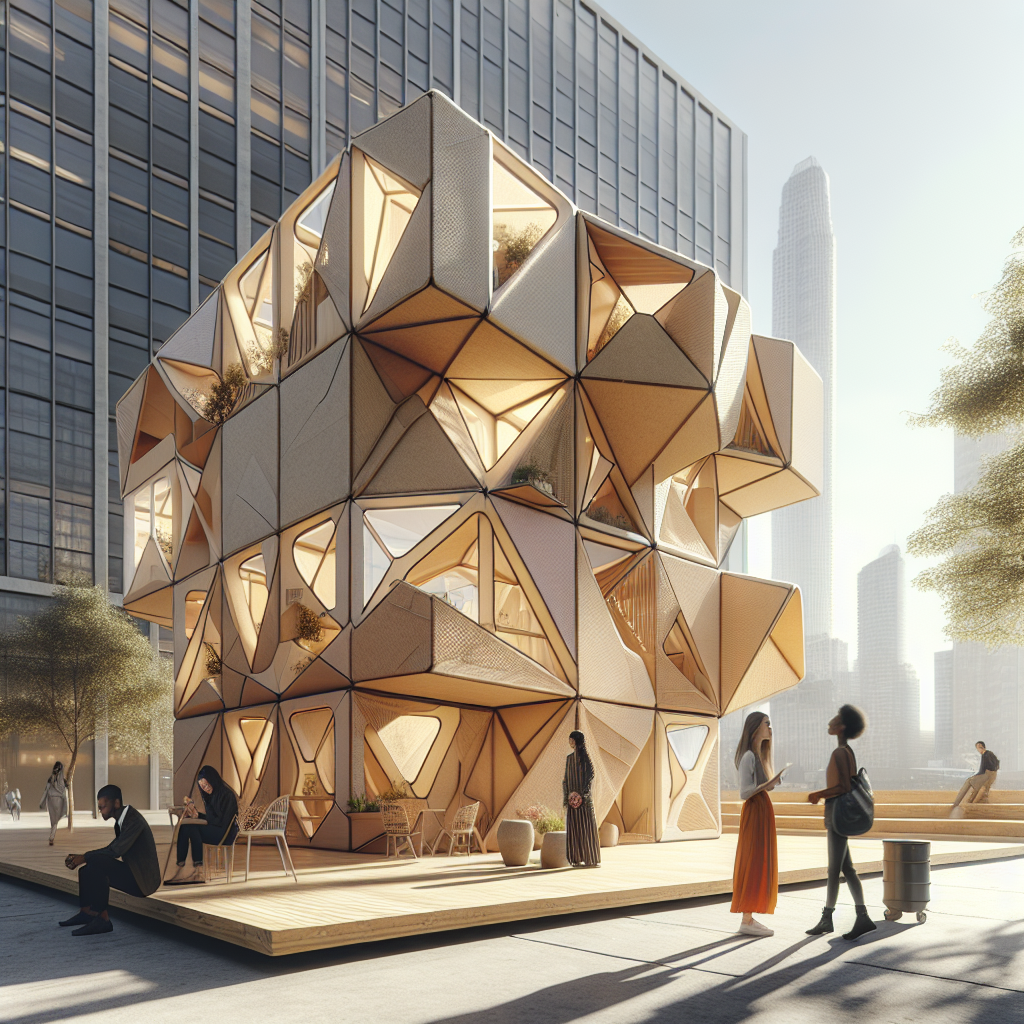
Paper-Based Architecture Folding: Habitats for Lightweight Pop-Up Spaces
In the evolving landscape of contemporary architecture, where sustainability and adaptability reign supreme, the ancient art of paper folding has found a remarkable new life. Architects and designers are harnessing the elegant simplicity of origami-inspired techniques to create lightweight, portable, and environmentally conscious pop-up spaces. These innovative structures not only redefine our perception of temporary habitats but also offer a compelling solution to the growing demand for flexible and sustainable design.
Origami Meets Architecture: A Fusion of Art and Engineering
Origami, the traditional Japanese art of paper folding, has long fascinated artists and mathematicians alike with its intricate patterns and geometric precision. Today, architects are translating these delicate paper forms into robust, functional spaces, leveraging the structural integrity inherent in folded designs. By adopting origami principles, designers can create spaces that are both visually captivating and highly efficient, using minimal materials to achieve maximum strength and stability.
One striking example is the work of Japanese architect Shigeru Ban, renowned for his humanitarian efforts and innovative use of paper tubes. Ban’s temporary shelters for disaster relief, constructed from recycled cardboard tubes and waterproof membranes, showcase the remarkable potential of paper-based architecture. These structures, though seemingly delicate, have proven resilient in harsh environments, offering rapid deployment and easy assembly without compromising on durability or comfort.
Sustainability and Mobility: The Rise of Pop-Up Habitats
In an era where sustainability is paramount, paper-based architecture emerges as a compelling alternative to traditional construction methods. Utilizing biodegradable and recyclable materials, these pop-up habitats significantly reduce environmental impact. Unlike conventional buildings, which often leave lasting ecological footprints, origami-inspired structures can be effortlessly dismantled, transported, and repurposed, aligning perfectly with the principles of a circular economy.
The trend towards sustainability in architecture is evident in various innovative practices, such as the growing popularity of biodegradable architecture and the integration of biophilic design elements, which enhance human well-being by connecting occupants with nature. Paper-based structures seamlessly fit into this paradigm, offering habitats that are not only environmentally friendly but also deeply human-centric.
Case Study: The Cardboard Cathedral in Christchurch
A remarkable illustration of paper-based architecture’s potential is the Cardboard Cathedral in Christchurch, New Zealand. Designed by Shigeru Ban following the devastating 2011 earthquake, this temporary cathedral exemplifies how folded paper structures can provide dignified, beautiful spaces in times of crisis. The cathedral’s A-frame design, composed of 98 massive cardboard tubes, is both aesthetically striking and structurally sound, capable of accommodating hundreds of worshippers.
The interior, bathed in soft, diffused light filtering through colorful triangular windows, creates an atmosphere of serenity and contemplation. This innovative approach not only addressed immediate needs but also sparked global interest in the viability of paper-based construction, inspiring architects worldwide to explore similar sustainable solutions.
Designing for Flexibility: Pop-Up Spaces in Urban Environments
Urban areas, with their dynamic and ever-changing landscapes, present unique challenges and opportunities for architects. Paper-based folding architecture offers an ideal solution for temporary installations, event spaces, and mobile structures within densely populated cities. These lightweight habitats can be quickly erected and dismantled, adapting seamlessly to the shifting needs of urban communities.
For instance, during major international events such as the upcoming Paris 2024 Summer Olympics, pop-up structures can provide temporary accommodations, exhibition spaces, and recreational areas without permanent alteration to the urban fabric. Such adaptability underscores the immense potential of paper-based architecture in addressing urban planning challenges sustainably and creatively.
Technological Innovations: Enhancing Paper-Based Structures
Advancements in technology have significantly expanded the possibilities of paper-based architecture. Digital fabrication techniques, including laser cutting and CNC milling, enable architects to create precise, complex folding patterns that were previously unattainable. Furthermore, the integration of augmented reality (AR) and virtual reality (VR) allows designers to visualize and refine their creations before physical assembly, streamlining the design process and reducing material waste.
Moreover, innovations such as waterproof coatings, fire-resistant treatments, and structural reinforcements have dramatically enhanced the durability and longevity of paper-based habitats. These technological enhancements ensure that origami-inspired structures are not merely temporary curiosities but viable, long-term solutions for various architectural applications.
Humanitarian Applications: Emergency Housing Solutions
Perhaps the most compelling application of paper-based architecture lies in its potential to provide rapid, effective emergency housing solutions. In the aftermath of natural disasters, conventional construction methods often prove too slow and resource-intensive. Origami-inspired habitats, however, can be swiftly deployed, offering immediate shelter to displaced populations.
Architects and humanitarian organizations increasingly recognize the value of disaster-resistant and resilient building designs. As explored in our previous article on disaster-resistant architecture, incorporating lightweight, foldable structures into emergency response strategies can significantly enhance community resilience and recovery efforts.
The Future of Paper-Based Architecture: Opportunities and Challenges
As architects continue to explore the potential of paper-based folding techniques, the future appears promising yet challenging. The inherent sustainability, adaptability, and aesthetic appeal of these structures position them as attractive alternatives to traditional construction methods. However, challenges such as material durability, weather resistance, and scalability must be addressed to ensure widespread adoption.
Additionally, architects must navigate regulatory frameworks and building codes, which often lag behind innovative construction methods. Collaborative efforts between designers, engineers, policymakers, and industry stakeholders will be essential in overcoming these barriers and unlocking the full potential of paper-based architecture.
Conclusion: A Paradigm Shift in Architectural Design
Paper-based architecture represents a profound shift in how we conceive and construct spaces. By embracing the elegance and efficiency of origami-inspired folding techniques, architects are crafting habitats that are sustainable, adaptable, and profoundly human-centric. From temporary urban installations to emergency shelters, these lightweight pop-up spaces offer compelling solutions to contemporary architectural challenges.
As we continue to explore innovative approaches to design and construction, the integration of ancient arts such as origami with cutting-edge technology promises to redefine our built environment. The rise of paper-based architecture signals not merely a trend but a transformative movement towards a more sustainable, flexible, and responsive architectural future.
To delve deeper into the intersection of technology and innovative design practices, explore our feature on technology’s impact on futuristic city design.
